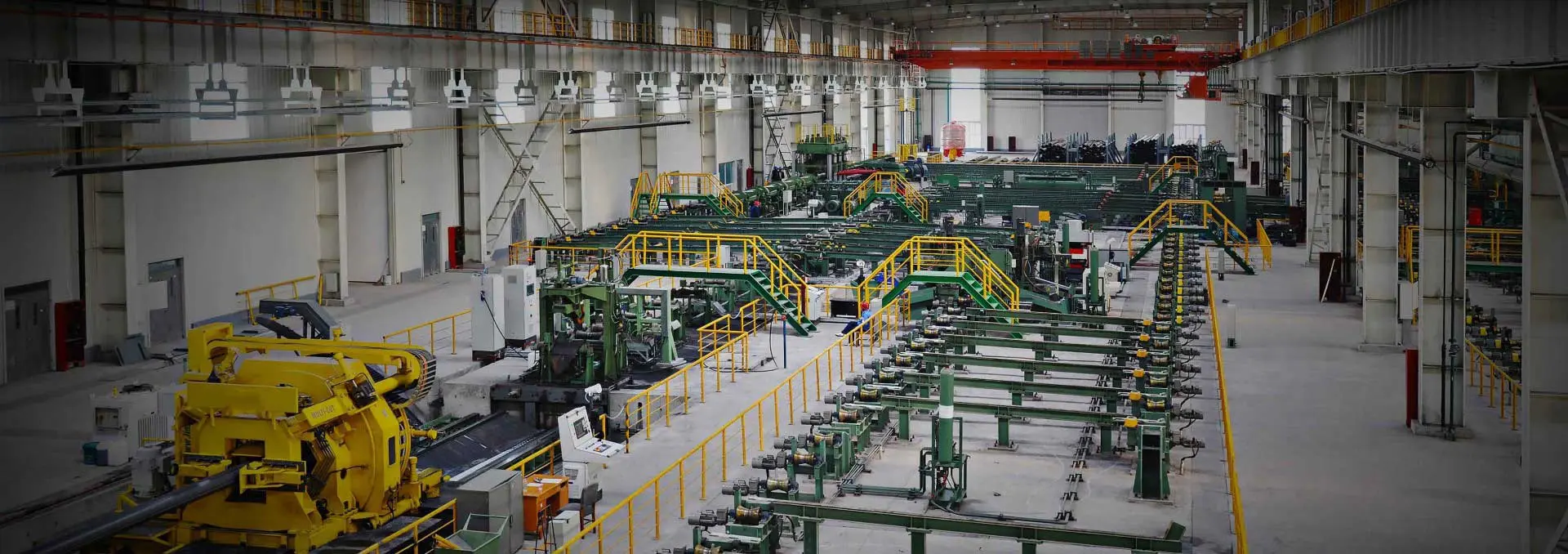Square tubes (SHS steel) are widely used in construction, machinery manufacturing, and various structural applications. They are typically produced by forming cold-rolled or hot-rolled steel sheets into a hollow square section. Thanks to their geometry, square tubes offer high strength, good compressive performance, low weight, easy processing, and a broad range of available specifications.
To support engineering design, procurement, and fabrication, it is essential to understand how to calculate square tube dimensions, theoretical weight, cross-sectional area, and standard size classifications. The following provides a complete and practical guide.
Key Parameters of Square Tube Sizes
1. Outer Side Length (A)
The width of the tube’s square cross-section, such as 50 in 50×50 mm.
2. Wall Thickness (t)
Measured in millimeters (e.g., t = 2.0 mm).
3. Inner Side Length (B)
Formula: B = A – 2t
4. Length (L)
Standard: 6 m
Other common lengths: 3 m, 4.5 m, 5.8 m, 8 m, 12 m, or custom-cut.
5. Theoretical Weight
Calculated using cross-sectional area and steel density.
Square Tube Size Classification
Square tubes commonly used in structural frames, supports, and interior applications can be categorized as:
1. Small-Sized Square Tubes
Width ≤ 20 mm
Height ≤ 40 mm
Wall thickness ≤ 2.0 mm
2. Medium-Sized Square Tubes
Width: 20–200 mm
Height: 40–400 mm
Wall thickness: 2.0–12.0 mm
3. Large-Sized Square Tubes
Width ≥ 200 mm
Height ≥ 400 mm
Wall thickness ≥ 12.0 mm
Square Tube Calculation Formulas
1. Inner Side Length (B)
B = A – 2t
Example:
50×50×2.0 → B = 50 – 2×2 = 46 mm
2. Length Calculation
Standard lengths: 6 m / 12 m
Processing lengths vary per project
Effective Length:
L₁ = L₂ – L₃
L₃ = cutting allowance (2–5 mm depending on blade type)
3. Wall Thickness Calculation
t = (Outer diameter – Inner diameter) ÷ 2
Example:
Outer: 60 mm, Inner: 50 mm → t = 5 mm
4. Cross-Sectional Area (S)
S = A² – (A – 2t)² = 4At – 4t²
Example:
50×50×2.0:
S = 4×50×2 – 4×2² = 384 mm²
5. Perimeter (P)
P = 4A
Example:
A = 100 mm → P = 400 mm
6. Theoretical Weight (W)
General formula:
W = S × L × ρ
ρ = 7.85×10⁻⁶ kg/mm³
Industry empirical formula (meters):
W (kg) = 0.0157 × (A − t) × t × L
Example:
100×100×4.0, L = 6 m
W = 0.0157 × (100 − 4) × 4 × 6 = 22.64 kg
Standard Sizes of Square Tubes
Common international specifications include 50×25 mm, 80×40 mm, 100×50 mm, etc.
Chinese standards include 40×30 mm, 70×50 mm, 100×80 mm, among others.
Users can select suitable sizes based on structural requirements or engineering drawings.
How to Select the Right Square Tube Size
When choosing a square tube, consider:
1. Load-Bearing Requirements
Square tubes must withstand static, dynamic, and impact loads.
Larger sections → higher load capacity
Smaller sections → suitable for light-duty or decorative/supporting applications
Selecting the correct size ensures structural reliability and cost efficiency.
|
Application Scenarios
|
Recommended Square Tube Size
|
|
Furniture, Lightweight Supports
|
20×20、25×25、30×30
|
|
Indoor Frames
|
40×40、50×50
|
|
Steel Structure Purlins
|
80×80、100×100
|
|
Heavy-Duty Structures
|
≥150×150
|
2. Analyze the Usage Environment and Application Requirements
The service environment of the square tube is a key consideration when determining the appropriate size.
For installations in humid, coastal, or chemically corrosive environments, square tubes with stronger corrosion-resistant materials and suitable wall thickness should be selected to ensure long-term durability.
In applications that involve frequent movement, adjustment, or disassembly, smaller and lighter square tubes are typically preferred, as they offer easier handling and better portability.
|
Environment
|
Recommendations
|
|
Outdoor, Humid
|
Galvanized square tubing or wall thickness ≥ 2.5mm
|
|
High Corrosion
|
Stainless steel square tubing (304/316)
|
|
High Temperature
|
High-strength carbon steel square tube(Q355, Q460)
|
3. Select According to Budget Considerations
In addition to meeting performance requirements, cost control is also an important factor when choosing square tube sizes.
Larger square tubes consume more raw material, which naturally increases costs.
When working within a limited budget, you can reduce dependence on large-size sections by optimizing structural design or choosing higher-strength materials. This helps achieve the required performance while keeping expenses under control.
FAQ
1. How is the wall thickness of square tubes determined?
Wall thickness is selected based on design loads, mechanical strength requirements, and environmental conditions.
Typical wall thickness ranges include:
Small square tubes: 1.0–2.0 mm
Medium square tubes: 2.0–4.0 mm
Large structural square tubes: 4.0–12.0 mm
2. What are the standard square tube dimensions?
Common specifications follow several international standards, including:
GB/T 6728 (China)
EN 10219 (Europe)
ASTM A500 (United States)
Dimensional requirements vary slightly across these standards.
3. What is the difference between SHS and RHS steel?
SHS (Square Hollow Section): A = A, forming a square cross-section.
RHS (Rectangular Hollow Section): A ≠ B, forming a rectangular cross-section.
RHS offers stronger bending resistance in one direction, while SHS provides more uniform compressive strength across all sides.

 English
English Español
Español




 Tel : +86-18565811709
Tel : +86-18565811709 Email :
Email : 
 News
News




